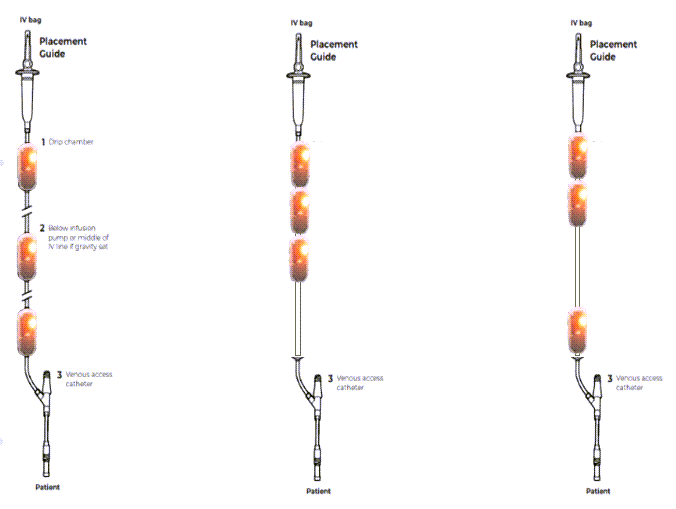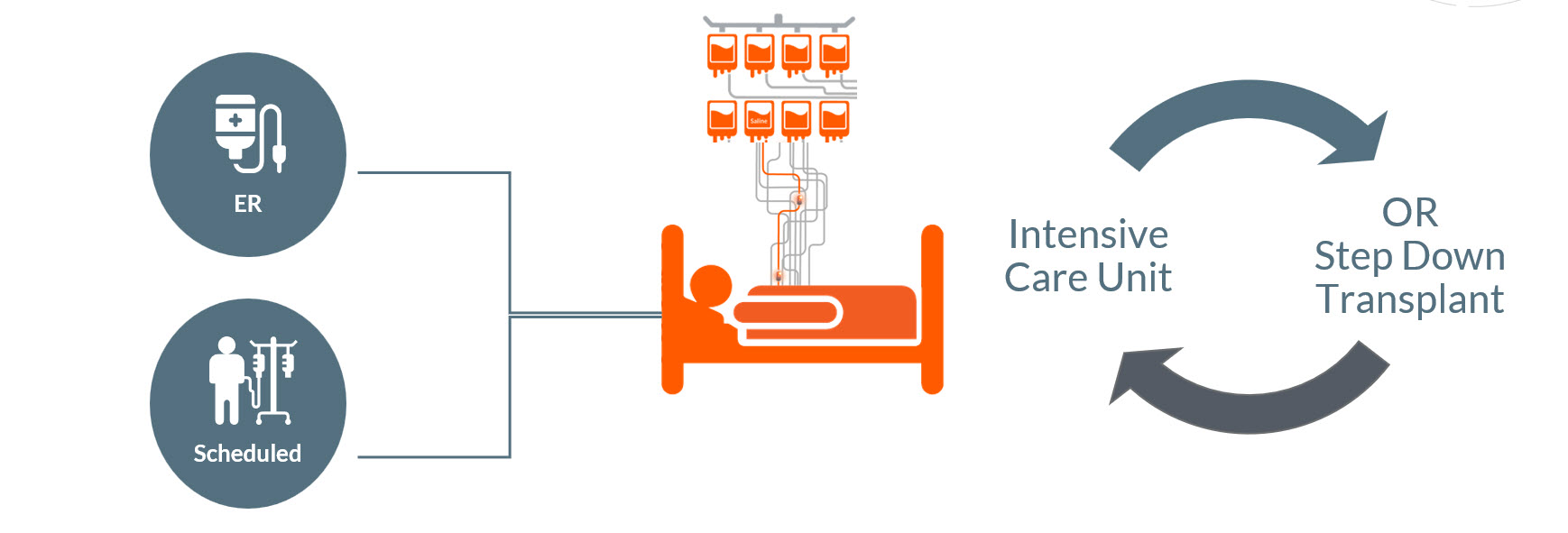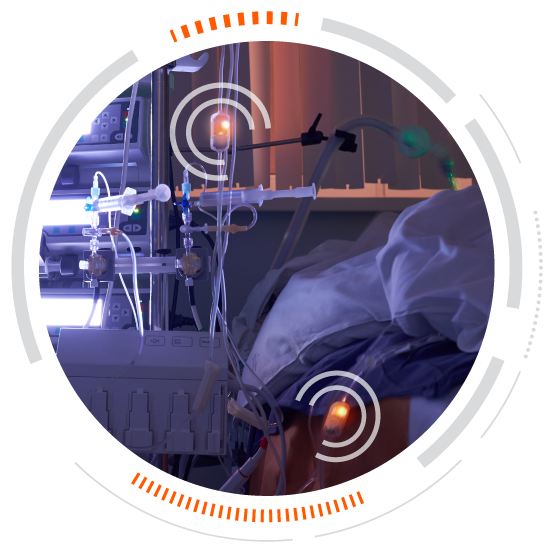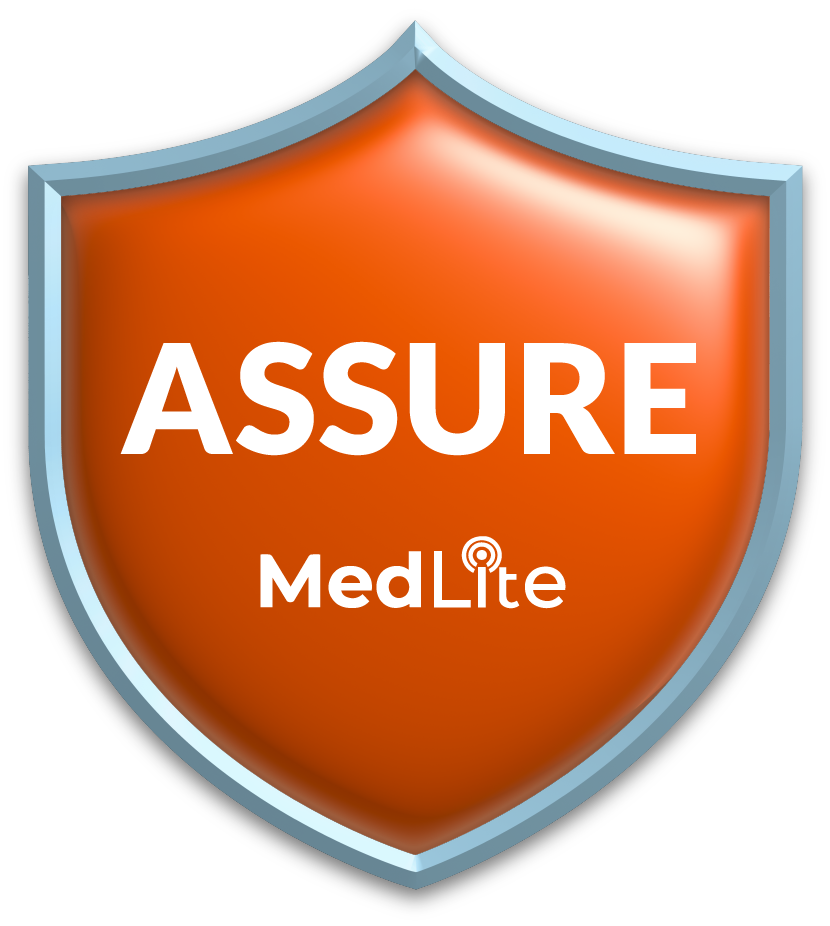MedLite Solutions
What is the MedLite ID Smart-Lite Solution?
MedLite ID Smart-Lites are a simple-to-use, disposable lighting solution assisting users to accurately and efficiently identify & illuminate lines in all light settings - focused on elminating line-tracing infusion ADE. Common use cases selected by hospitals include identification of the KVO line or high-risk drug lines such as vasopressors or heparin. The location of MedLite ID allows the communication of different line types; hospital training and standardization set protocol based on goals. Any patient with two or more IV lines, and the potential for an infusion Adverse Drug Event, can benefit from the MedLite ID solution. MedLite ID has seven utility patents issued and counting.
-
ADE: has the potential to virtually eliminate infusion IV line-tracing errors that may lead to Adverse Drug Events, potential accidental death, and associated lawsuits. Making this a “Never Event.”
-
Disease Exposure: A multi-minute procedure can be done in less than 60 seconds, assisting in eliminating up to two hours of avoidable infectious disease exposure per twelve-hour shift (16-bed ICU).
-
Simple: 90 seconds to learn, 60 seconds to attach, and less than 10 seconds to access the medication port. Near-zero change to workflow and behavior. Patient and caregiver lives can be changed for the better. Smart lites can be disposed of where you dispose of IV lines today and MedLite lasts 96 hours tied to INS line change guidance.
- Trusted: Medlite ID is trusted by acute facilities, VA/DoD, and air ambulance services around the world to help prevent errors. MedLite ID is approved on the Federal Supply Schedule (FSS) and Government Supply Agreement (GSA).
Example Use Case: MedLite ID Identification of the KVO Line
MedLite ID Location = Communication
Location of MedLite ID Smart Lites Can Communicate Different Hospital Scenarios. Hospital goals and training can determine the best use cases to prevent infusion ADE. Common use cases selected by hospitals include identification of the KVO line or high-risk drug lines such as vasopressors or heparin. As the patient journey moves them from department to department, this simple safety standard protects against infusion ADE throughout the hospital, for every shift, and in all lighting conditions.

Eye Level/Mid/Med Port
Example: KVO Line
(3) Smart Lites at Eye Level
Example: Drug Type B
(2) Smart Lites at Eye Level, (1) at Med Port
Example: Drug Type C
- Intended Use: Location of MedLite ID Smart Lites May Communicate Hospital-Specific Infusion Scenarios. Individual Hospital Infusion Safety Goals and Training Can Determine Best Use Cases.
- Contraindication: MRI incompatible
 I liked that I could use it to identify the line I needed from the other side of the bed and had quicker access that way. Quicker access and detection of line in an emergent situation. When you have a lot of different meds running on a patient, it made it so easy to identify.”
I liked that I could use it to identify the line I needed from the other side of the bed and had quicker access that way. Quicker access and detection of line in an emergent situation. When you have a lot of different meds running on a patient, it made it so easy to identify.”
— Intermountain Healthcare
Smart-Lites and the Patient Journey
MedLite Smart-Lites help caregivers identify and illumninate key infusion lines, but it doesn't stop there.
Smart-Lites also travel with critically ill patients as they move through the hospital (from the ICU to the OR, for example), creating standardization through the patient journey.

How To Attach MedLite ID, 60-Second Simple

-
Pull the battery activation tabs from the 3-light Smart-Lite set, to activate and auto-pair the lights.
-
Attach one light to each of three locations: Below the drip chamber, below the infusion pump (or the middle of the IV line if gravity set), and prior to the venous access catheter.
-
Press any button on any Smart-Lite and all three Smart-Lites will activate (they will automatically turn off after 50 seconds). The Smart Lites will last 96 hours tied to Infusion Nursing Society Guidelines. Smart lites can be disposed of where you dispose of IV lines today.
Frequently Asked Questions
Reuse: Lites are single-use and cannot be reused to protect against infection and mismatching smart-lites from different sets. Lites last (4) days.
What if the Batteries are Dead: Greater than 96 hours have passed, but you can still identify the infusion line via the oblong shapes of MedLite ID.
Infusion Tubing Compatability: The Lites attach to the exterior of any IV Line 3.0-4.2mm with a firm fit, and with a slip-fit on smaller diameter lines. You can move the Lites once affixed to adjust their location.Disposability: Dispose of in standard waste, in the current location where you dispose of IV lines today. Lites are incinerator-safe and ROHSS certified.
Transmission Distance: 12 feet. MedLite can be used with extension sets and pumps located outside an infectious disease room.
What About Light Sensitive Drugs: The MedLite LED faces away from the IV tube and is not heat-generating.
Disinfection: Can be cleaned with up to 70% isopropyl alcohol, Sani-Wipes, or common hospital cleaners.


Education on the Fly
We offer incredible, nurse-led training in-service training, but what about the nurse or department that receives a patient and was not originally part of the training? We have you covered, snap our MedLite ID QR code and get a 2-minute training video.

Life Without Infusion Confusion?

What would tomorrow look like without these line-tracing identification risks?
-
Avoidable infectious-disease exposure
-
2x higher ADE risk for each ER patient admitted
-
26% of ICU patients have a life-threatening ADE
-
30% greater risk of adverse drug events with 10 additional lines after the first IV line (3% per line)
-
80% of tape is tested positive for pathogens
-
$242,000 average payout for lawsuits related to drug interaction errors
- $5.0M+ in average costs to hospitals for wrongful deaths
Without changes in how IV lines are differentiated, hospitals will continue to struggle to avoid ADE risks for their patients, reduce nurses’ exposure to infectious diseases, and decrease preventable accidental deaths, and lawsuits.
MedLite Assure Guarantee
We stand with you
MedLite ID Smart-Lites can make infusion Adverse Drug Events “never events” and reduce infectious disease exposure for your patients, facility, and care team. But beyond this powerfully simple way to standardize patient safety, we bring a rarely seen promise: To stand with you. To create the results at your facility with your care team.
MedLite ID Assure is available for select facilities, As you adopt MedLite ID and change patient care and caregiver lives alike, should an infusion Adverse Drug Event occur while using MedLite ID, MedLite ID will pay for it.
Yes, we are that committed to your success.

Standards
-
FCC Part 15: device complies with Part 15 of the FCC Rules and this device also contains license-exempt transmitter(s)/receiver(s) that comply with Innovation, Science and Economic Development Canada’s license-exempt RSS(s). Operation is subject to the following two conditions: (1) this device may not cause harmful interference, and (2) this device must accept any interference received, including interference that may cause undesired operation. FCC ID: 2ATMC-IDAO1US , 2ATMC-IDAO1923
- MRI Safety Information:: MedLite ID are MR-unsafe and present a potential projectile hazard. MR-unsafe items should not be brought into MRI scanner rooms
- MedLite ID Patents: MedLite has multiple granted utility patents, please see www.uspto.gov for further information.
